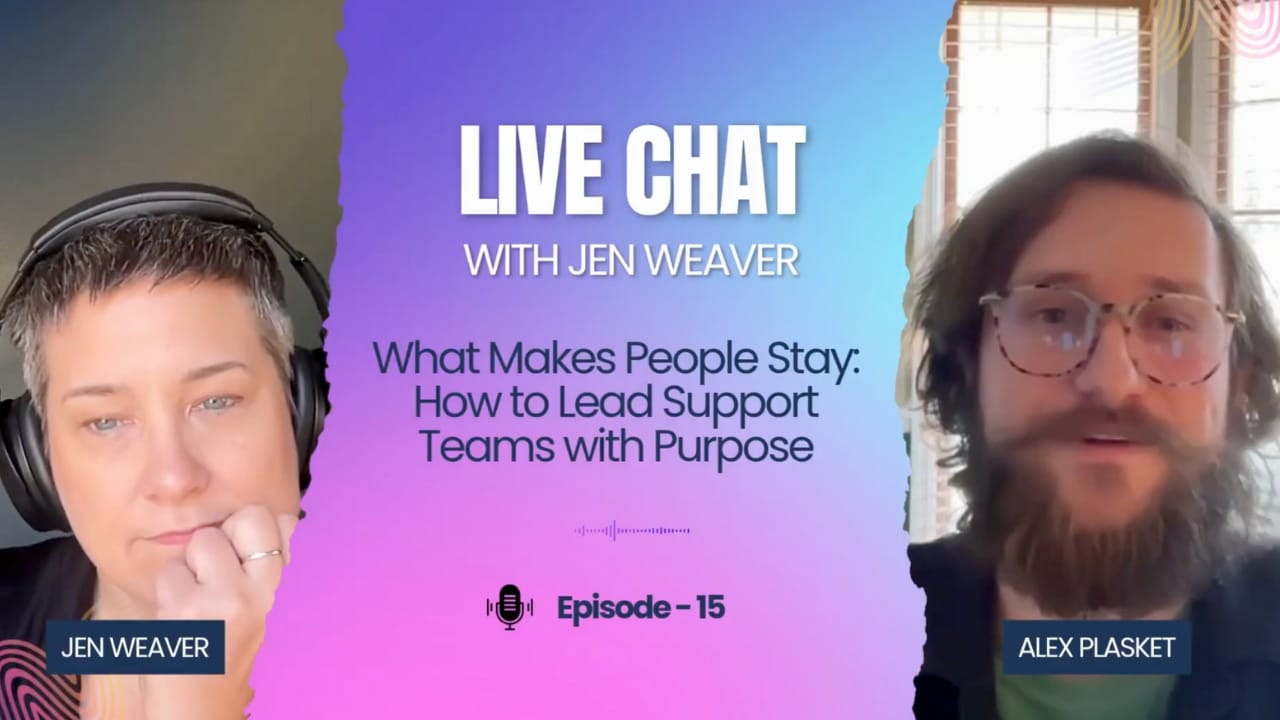- Support Leaders Newsletter
- Posts
- 🎤 What Makes People Stay: How to Lead Support Teams with Purpose
🎤 What Makes People Stay: How to Lead Support Teams with Purpose
Your Inside Look at Exceptional Customer Experiences

“Every situation has a problem and a concern. They can overlap, but they’re not the same—and if you don’t address both, you haven’t really helped.”
🦸 This newsletter is brought to you by Supportman.io

Support teams don’t always get the recognition they deserve. Too often, they’re treated like a temporary stop—something to move through on the way to a “real” role. But what if support could be more than that? What if it could be the place people grow and choose to stay
In this episode, I sit down with Alex Plasket, Manager of Customer Support at Paytient, whose team isn’t just effective, they’re invested. They stick around, support each other, and actually enjoy the work. And it’s not because of gimmicks or grand gestures. It’s because Alex leads with intention, builds trust from day one, and creates culture in the everyday moments.
We dig into the principles behind how he does it and how you can build a team that doesn’t just perform, but thrives.
To skip the summary below and go straight to the source:
And don't forget to check out Supportman.io, the sponsor of this podcast, which connects Intercom to Slack and utilizes AI to provide agents with real-time feedback and surface issues.
The Problem:
Support teams move fast. New hires come in, tickets pile up, and leaders are expected to scale without slowing down. In the rush, trust gets skipped, culture feels shallow, and onboarding becomes a checklist instead of a foundation.
You start to see the symptoms: high turnover, low confidence, missed opportunities to grow the team from within. The work gets done, but people don’t feel connected or supported. And before long, your best team members are quietly looking for the exit.
If your team feels like it’s in a constant cycle of training, burnout, or rebuilding, you're not alone, and it doesn’t have to stay that way.
The Solution:
Alex Plasket has quietly built one of the most loyal, high-trust support teams we’ve seen. His process is personal, intentional, and designed to create lasting impact, starting on day one.
Here’s how he does it:
1️⃣ Step 1: Start with Trust (Not Scale)
Structured onboarding begins with “Syllabus Day” and week-by-week agendas personalized to the new hire. Every login, link, and teammate intro is pre-planned.
Build confidence by spending more time 1:1 in the first weeks
Teach company tone and brand voice by modeling in real tickets
Use Intercom and Slack to co-work and co-write responses
2️⃣ Step 2: Teach the Problem vs. Concern Theory
Support isn’t just about solving problems—it’s about understanding what customers are really worried about.
Train agents to address emotional needs, not just technical issues
Coach live in the queue using real customer context
Encourage proactive solutions to de-escalate stress
3️⃣ Step 3: Coach with Real Conversations
Skip the LMS modules—Alex uses actual chats to guide learning and feedback.
Ask agents to submit one “I nailed it” chat and one “I need help” chat
Use Intercom CSAT stars (happy/angry faces) to surface teachable moments
Build confidence by showing what “great” looks like, not just “good enough”
4️⃣ Step 4: Build Culture with Language and Ritual
What do you call your team? What do you call your customers? It matters.
Refer to customers as “friends” to shift tone and increase empathy
Give team members nicknames and emoji identities
Establish fun rituals like shoutouts, Slack group tags, and “champion” branding
5️⃣ Step 5: Align Interests with Business Needs
The best internal mobility starts early, through casual discovery and trust.
Ask new hires what interests them beyond the queue
Create stretch opportunities aligned with actual team needs
When they’re ready to move on, cheer them forward.
Final Thought:
The future of support isn’t just fast—it’s thoughtful, personal, and built on trust.
You don’t need a huge team or a fancy LMS to get there. Start with structured onboarding, coach through real conversations, teach emotional nuance, and build culture in the small, repeatable moments. That’s how you create a team people want to grow with.
Helpful Links:
📧 Join the newsletter for weekly tactical tips
👩💻 Connect with Jen